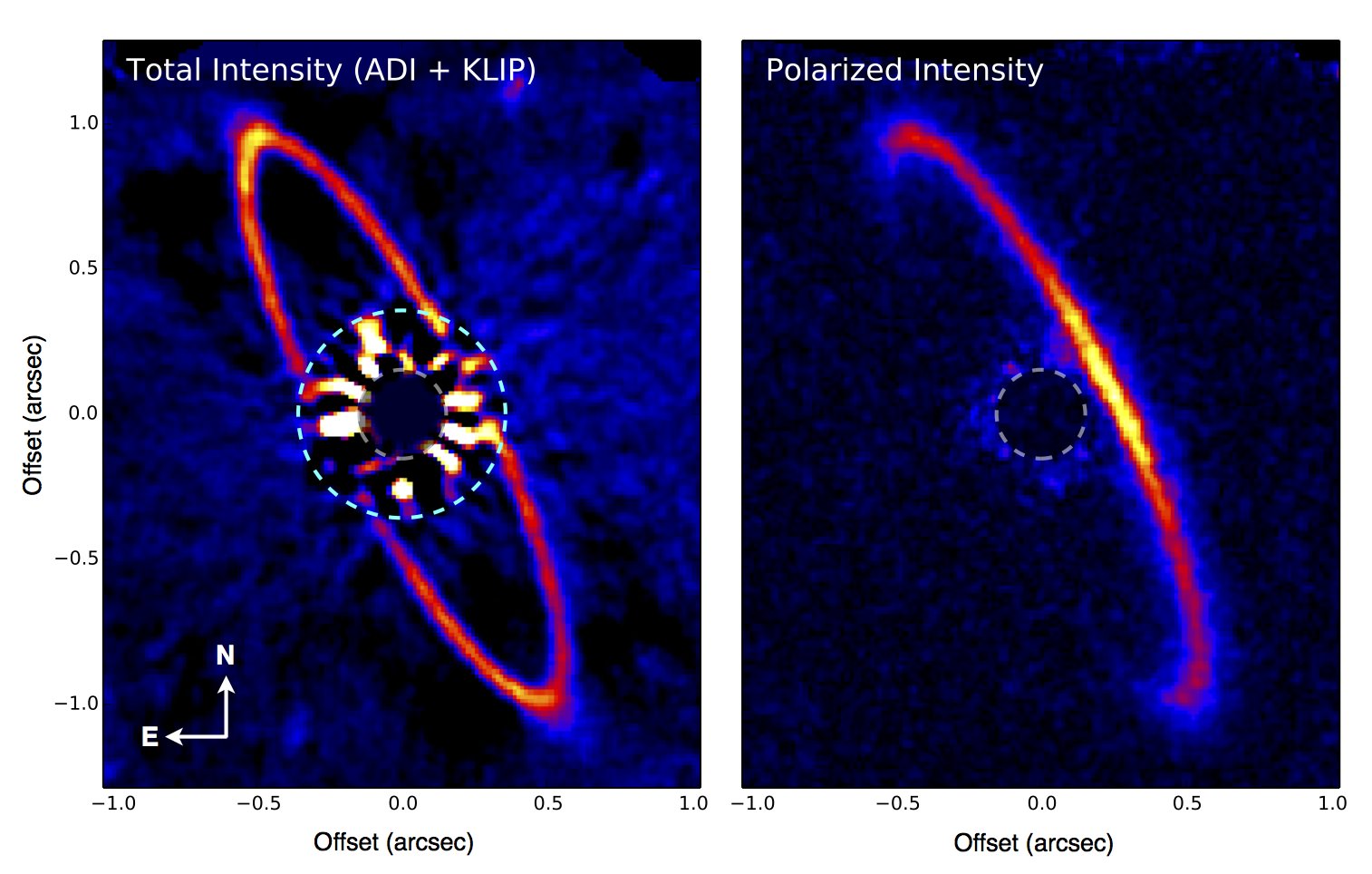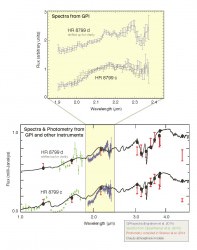Exoplanet Beta Pic b orbiting Beta Pictoris from Dunlap Institute on Vimeo.
Just. Wow. The motion of an alien world, reduced to a looping .gif. We truly live in an amazing age. A joint press release out of the Gemini Observatory and the University of Toronto demonstrates a stunning first: a sequence of direct images showing an exoplanet… in motion.
The world imaged is Beta Pictoris b, about 19 parsecs (63 light years) distant in the southern hemisphere constellation Pictor the Painter’s Easel. The Gemini Planet Imager (GPI), working in concert with the Gemini South telescope based in Chile captured the sequence.
The images span an amazing period of a year and a half, starting in November 2013 and running through April of earlier this year. Beta Pictoris b has an estimated 22 year orbital period… hey, in the year 2035 or so, we’ll have a complete animation of its orbit!
Current estimates place Beta Pictoris b in the 7x Jupiter mass range, about plus or minus 4 Jupiter masses… and yes, the high end of that range is flirting with the lower boundary for a sub-stellar brown dwarf. Several exoplanet candidates blur this line, and we suspect that the ‘what is a planet debate?’ that has plagued low mass worlds will one day soon extend into the high end of the mass spectrum as well.
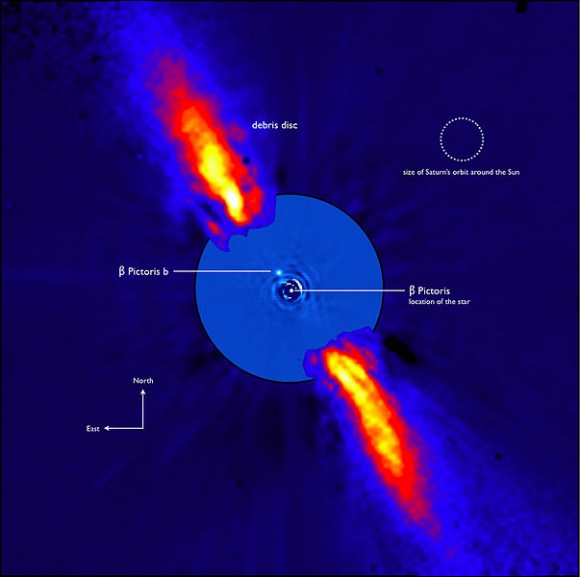
Beta Pictoris has long been a target for exoplanetary research, as it is known to host a large and dynamic debris disk spanning 4,000 astronomical units across. The host star Beta Pictoris is 1.8 times as massive as our Sun, and 9 times as luminous. Beta Pic is also a very young star, at an estimated age of only 8-20 million years old. Clearly, we’re seeing a very young solar system in the act of formation.
Orbiting its host star 9 astronomical units distant, Beta Pictoris b has an orbit similar to Saturn’s. Place Beta Pictoris b in our own solar system, and it would easily be the brightest planet in the sky.
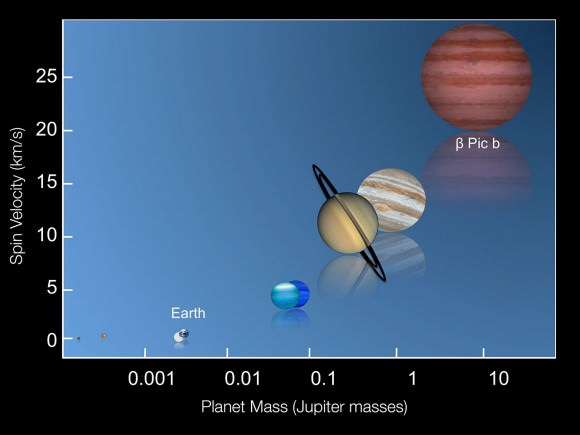
“The images in the series represent the most accurate measurements of a planet’s position ever made,” says astronomer Maxwell Millar-Blanchaer of the Department of Astronomy and Astrophysics at the University of Toronto in a recent press release. ‘With the GPI, we’re able to see both the disk and the planet at the exact same time. With our combined knowledge of the disk and the planet we’re really able to get a sense of the planetary system’s architecture and how everything interacts.”
A recent paper released in the Astrophysical Journal described observations of Beta Pictoris b made with the Gemini Planet Imager. As with bodies in our own solar system, refinements in the orbit of Beta Pictoris b will enable astronomers to understand the dynamic relationship it has with its local environment. Already, the orbit of Beta Pictoris b appears inclined out of our line of sight in such a way that a transit of the stellar disk is unlikely to occur. This is the case with most exoplanets, which elude the detection hunters such as the Kepler space telescope. As a matter of fact, watching the animation, it looks like Beta Pictoris b will pass behind the occluding disk and out of view of the Gemini Planet Imager in the next few years.
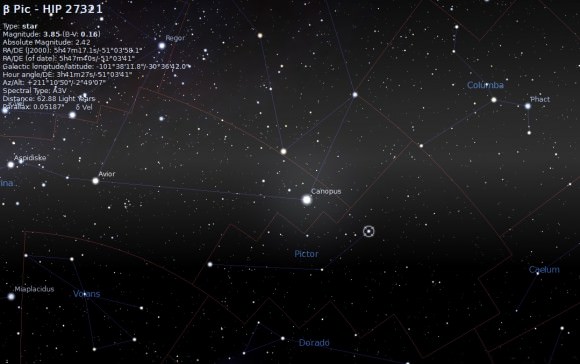
“It’s remarkable that Gemini is not only able to directly image exoplanets but is also capable of effectively making movies of them orbiting their parent star,” Says National Science Foundation astronomy division program director Chris Davis in Monday’s press release. The NSF is one of five international partners that funds the Gemini telescope program. “Beta Pic is a special target. The disk of gas and dust from which planets are currently forming was one of the first observed and is a famous laboratory for the study of young solar systems.”
The Gemini Planet Imager is part of the GPI Exoplanet Survey (GPIES), which discovered its first exoplanet 51 Eridani b just last month. The survey will target 600 stars over the next three years. The current tally of known exoplanets currently sits at 1,958 and counting, with thousands more in the queue courtesy of Kepler awaiting confirmation.
And as new spacecraft such as the Transiting Exoplanet Survey Satellite (TESS) take to orbit in 2018, we wouldn’t be surprised if the tally of exoplanets hits five digits by the end of this decade.
An amazing view of a brave new world in motion. It’s truly a golden age of exoplanetary science, with more exciting discoveries to come!


